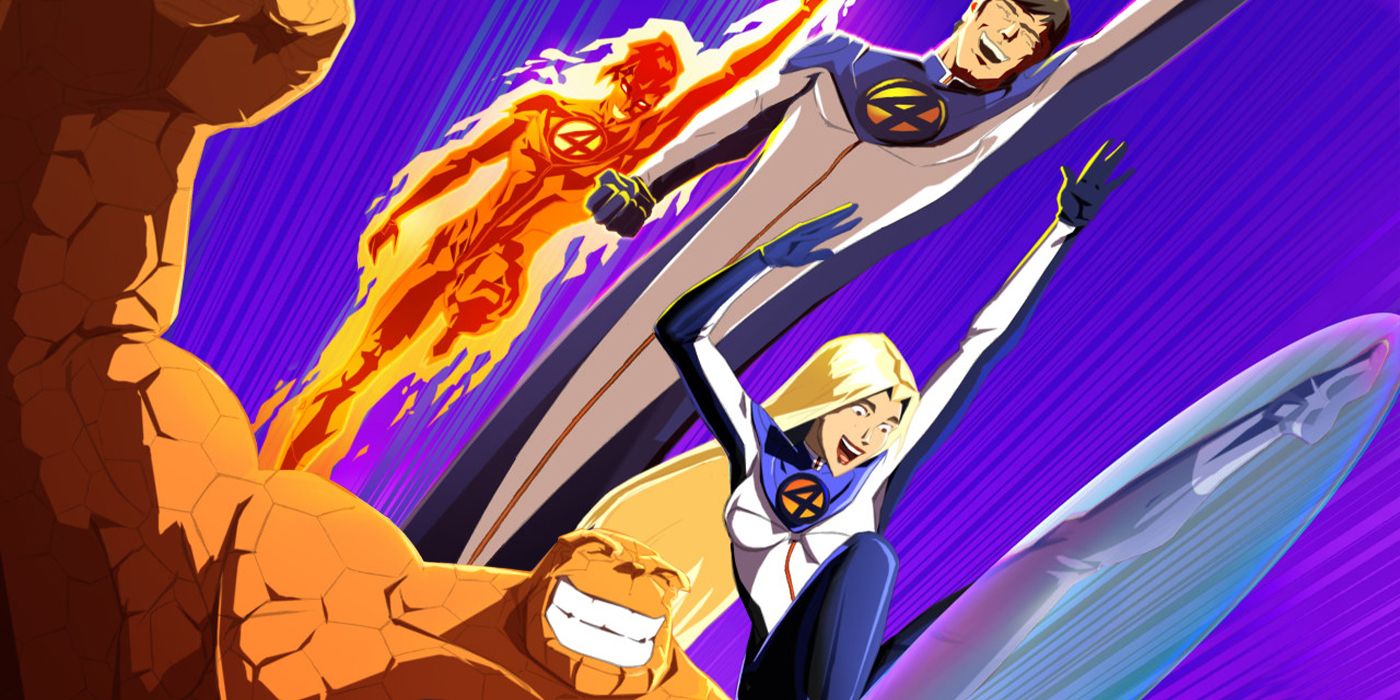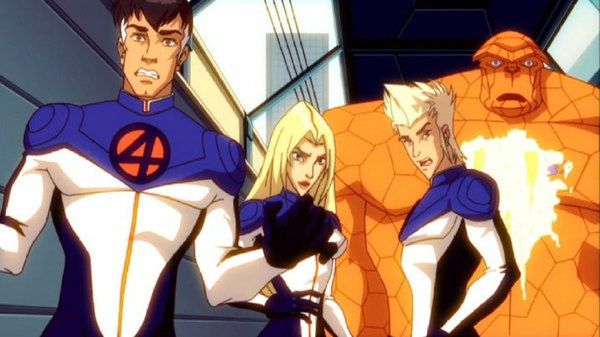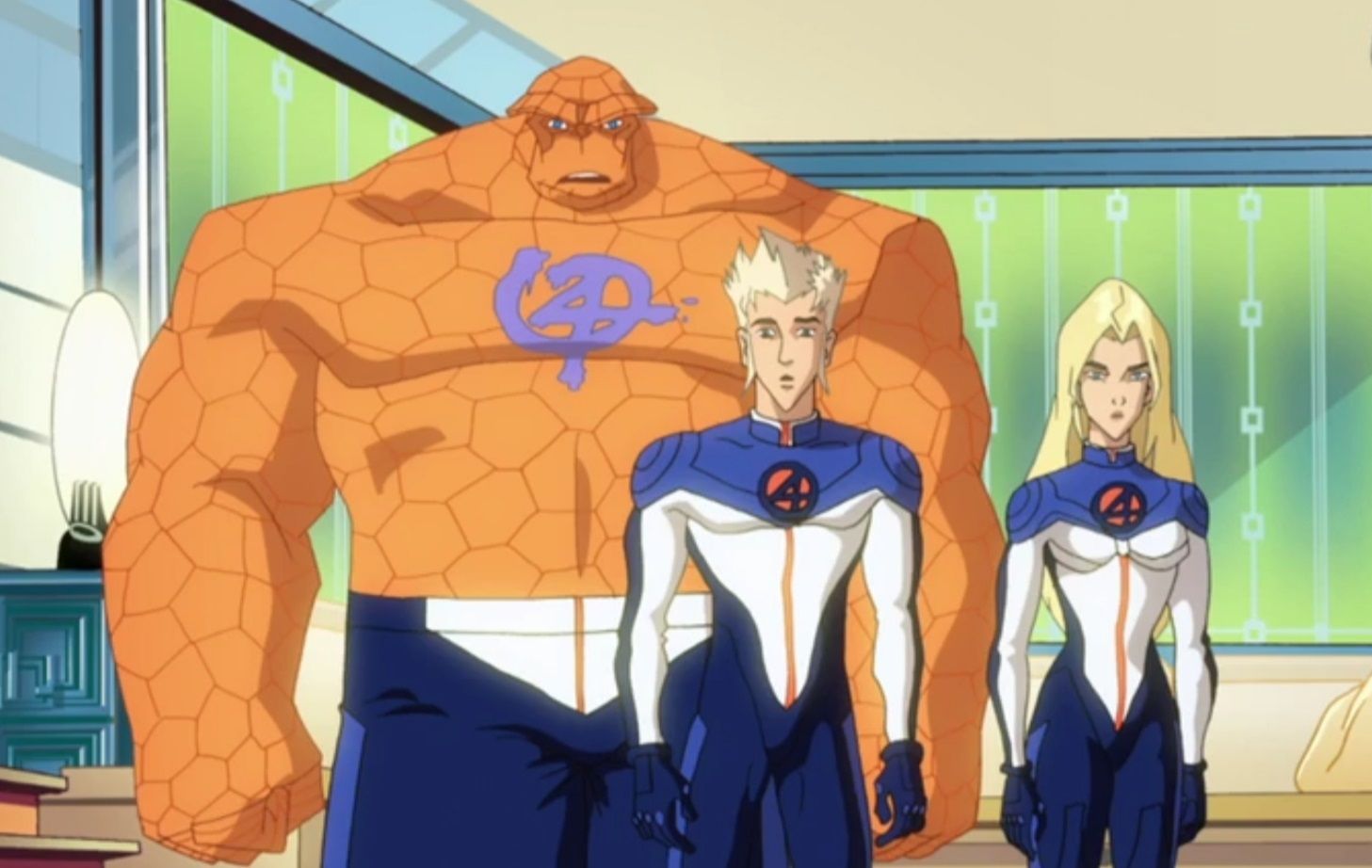
When it comes to adaptations, few Marvel properties have had a tougher time than the Fantastic Four. Despite being Marvel’s “first family,” with their original comic book dating back to 1961, the Fantastic Four struggled through a time when seemingly every other Marvel hero or team had become a big-screen sensation. We’ve released three Fantastic Four films produced by 20th Century Fox over the past 20 years, but not all three have left a lasting impact. We also know that a new Marvel Studios movie reboot is on the way, but, in the meantime, let’s take a look back at an underrated adaptation that did these characters really well: Fantastic Four: World’s Greatest Heroesthe sadly short-lived cartoon from French animation studio MoonScoop that aired on and off throughout the second half of the 2000s.
Where the previous Fantastic Four cartoon from 1994 (just titled The Fantastic Four) tended to directly adapt plots from relatively unchanged comic book issues, The world’s greatest heroes struck the right balance between staying true to character dynamics and the upbeat tone of classic comics while building its own take on the characters and storylines. Some basic comic book locales are used here (like Doctor Doom launching the Baxter Building into space and Hulk and the Thing getting into a fight), but the way they play out feels specific to the show’s world. This makes The world’s greatest heroes a great entry point for newcomers to the franchise while also being a treat for long-time fans who already know these stories and characters so well.

Fantastic Four: World’s Greatest Heroes also incorporates a complete visual overhaul of the property, incorporating many anime influences into its character design and animation style. Exaggerated proportions, such as Thing’s incredible width or the way most of the main characters feel weirdly tall and angular, fit the superhero’s pulpy tone well and help make the storytelling consistent with the visuals. The team’s costumes, which feature the classic “4” logo on a bright orange background, are a highlight. (And the fact that the same logo is simply spray-painted on the Thing’s chest is particularly inspired.) There were undoubtedly risks involved in redesigning characters in this way, but everyone is still immediately recognizable as himself, and each character feels visually distinct and memorable. According to the Season 1 DVD Special Features, the art team wanted to push the boundaries of their reimagined designs even further by giving Susan Storm bubblegum pink hair, but that idea was apparently rejected by Marvel, who insisted on keep her blonde.
The characters are the real star here. Although not exploited as deeply as they would be in more modern comics, The world’s greatest heroes stays true to the essence of the main four by building on the core concept of “a collection of sitcom family archetypes turned superheroes” that has been the property’s foundation for decades. The show often constructs humorous storylines built around the Four’s domestic life and the petty feuds they have between superheroics. While Reed and Susan’s potential romance is only hinted at, Johnny and Ben’s friendship/rivalry dynamic (illustrated in the excellent episode “Doom’s Word is Law”), the contrast between scientific intellect of Reed and his interpersonal distraction, and Susan’s role as the aggrieved glue that holds the team together is intact. The show also creates a much more involved role for HERBIE, Reed Richards’ virtual intelligence assistant originally created for the 1978 cartoon. The new Fantastic Fourwhose neurotic personality adds many hilarious complications to the proceedings.
In terms of structure, just about every episode of The world’s greatest heroes is a self-contained adventure. While some villains are obviously recurring (Doctor Doom appears in 9 out of 26 episodes!), episodes never truly form multi-episode arcs, with minor references to previous episodes being the extent of continuity management. It’s clear that the show’s narrative style is reminiscent of the ’60s era under Stan Lee and Jack Kirby, where most of the stories in the early issues of the Fantastic Four comic would be relatively self-contained with respect to this particular issue. This makes the show easily digestible for newcomers and casual watchers, as you don’t have to watch the episodes in the correct order to enjoy it. You are free to enter and exit as you please while working your way through it. This structure was also useful because the episodes were broadcast extremely out of service, although the correct production order was restored on home video releases.

It also makes it easy to recommend a handful of specific episodes if you’re just looking to test the waters. The first (in production order, anyway), “Doomsday”, is about as succinct an introduction to the basic Fantastic Four setup as you’re likely to get anywhere, providing a basis for the four main characters, the tone of the series, and their biggest villain, Doctor Doom…all in just about 20 minutes. If you’re interested in seeing the Fantastic Four interact with other characters from the wider Marvel Universe, you can watch “Hard Knocks,” which provides the aforementioned showdown between Hulk and The Thing, or “Shell Games,” which features an appearance from Iron Man, who must team up with the Fantastic Four when Doctor Doom hacks his armor. “The Cure” is a great examination of why The Thing’s desire to be “just Benjamin Grimm” is sympathetic but ultimately wrong again, and “Out of Time” has one of the most shocking moments in the series when a member of the Fantastic Four is erased from existence, forcing the remaining heroes to figure out what to do without them.
Unfortunately, like Spectacular Spider-Man, Wolverine and the X-Menand Avengers: Earth’s Mightiest Heroes, Fantastic Four: World’s Greatest Heroes was canceled before it had time to build its audience. There was never any mention of some of Fantastic Four’s most important characters and storylines, such as the Inhumans, Reed and Susan’s marriage and subsequent children, or the arrival of Silver Surfer and Galactus. It doesn’t represent all of what the Fantastic Four could be in an adaptation, but it’s still a gem in its own right for fans and new faces to enjoy.
Read more
About the Author